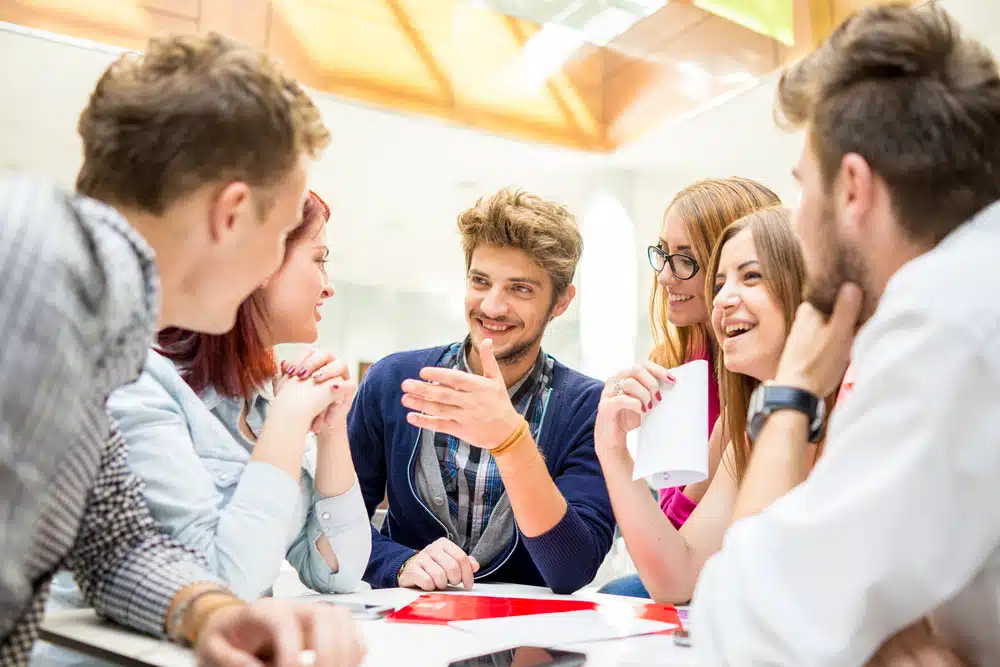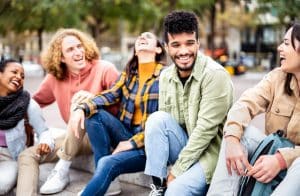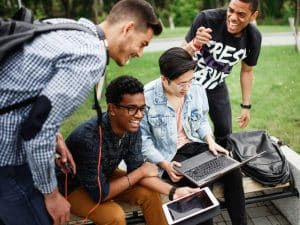Social Life at Columbia
Discover the vibrant social life at Columbia! From lively campus events to diverse student clubs, there’s something for everyone. Join us as we explore the exciting world of student activities and the bustling community that awaits. Don’t miss out—get ready to immerse yourself in the Columbia social scene!
Understanding Columbia University’s Social Life
One of the key aspects of social life at Columbia is the role of student organizations. These groups play a crucial role in fostering a sense of community and belonging among students. With over 500 clubs and organizations to choose from, there is something to cater to every interest and passion. Whether you’re interested in political activism, creative arts, or cultural exchange, you’ll find like-minded individuals who share your passion and drive.
In addition to student organizations, campus events, and traditions also play a significant role in shaping Columbia’s social scene. From Homecoming to Class Day, there are numerous annual events that bring students together to celebrate and create lasting memories. These events not only provide an opportunity for socializing but also serve as a way to strengthen the bonds between students and develop a sense of pride in being a part of the Columbia community.
Another important aspect of social life at Columbia is the role of residential halls. These spaces serve as more than just a place to rest your head; they are vibrant communities where friendships are formed and lifelong memories are made. Each residential hall has its own unique culture and atmosphere, offering various activities and events that allow students to socialize and connect with their peers.
The Impact of New York City on Columbia University
Living in the heart of New York City, Columbia students are surrounded by an array of attractions and opportunities that further enrich their social lives. The city serves as an extension of the campus, offering a multitude of cultural, artistic, and recreational experiences. Students can explore world-class museums, attend Broadway shows, or simply take a walk through Central Park and discover the hidden gems of the city.
One of the unique aspects of Columbia’s social life is the interaction between students and the city’s diverse population. Many students opt to live off-campus, immersing themselves in the vibrant neighborhoods of the city. This provides an opportunity for social interaction beyond the campus and allows students to engage with the local community and experience the authentic culture of New York City.
The influence of NYC culture on Columbia’s social life is undeniable. The city’s fast-paced and diverse environment encourages students to engage in new experiences and broaden their perspectives. This cultural exposure translates into a rich and dynamic social scene at Columbia, where students are constantly learning, growing, and evolving through their interactions with the city and its inhabitants.
When it comes to cultural experiences, New York City offers an unparalleled range of options for Columbia students. From the iconic Metropolitan Museum of Art to the cutting-edge galleries of Chelsea, students have access to world-class art and exhibitions. They can immerse themselves in the vibrant street art scene of Bushwick or attend film festivals showcasing the latest independent films. The city’s cultural institutions also frequently collaborate with Columbia, providing students with exclusive opportunities to engage with artists, curators, and scholars.
For those with a passion for performing arts, New York City is a dream come true. Broadway, located just a short distance from Columbia’s campus, is home to some of the most renowned theater productions in the world. Students can catch the latest Tony Award-winning musical or discover emerging talent in off-Broadway shows. Additionally, the city boasts a thriving music scene, with venues ranging from intimate jazz clubs to iconic concert halls, offering students the chance to experience live performances across genres.
When Columbia students feel the need to escape the hustle and bustle of the city, they can find solace in the tranquility of Central Park. Spanning 843 acres, this urban oasis provides a peaceful retreat where students can relax, exercise, or simply enjoy nature. From picnicking on the Great Lawn to rowing on the lake, Central Park offers countless recreational activities that allow students to recharge and unwind amidst the vibrant energy of the city.
Living off-campus in New York City also provides Columbia students with the opportunity to explore the city’s diverse neighborhoods. Each neighborhood has its own distinct character and charm, offering a unique social experience. Students can venture into the trendy streets of Williamsburg in Brooklyn, known for its vibrant nightlife and thriving arts scene. They can also explore the historic streets of Greenwich Village, where iconic cafes and music venues have played a significant role in shaping American culture.
Moreover, the city’s diverse population creates a melting pot of cultures and perspectives that greatly influences Columbia’s social life. Interacting with people from different backgrounds and walks of life fosters a sense of inclusivity and broadens students’ understanding of the world. Whether it’s engaging in conversations with street performers in Times Square or volunteering at local community centers, Columbia students have ample opportunities to connect with the city’s residents and contribute to the fabric of New York City.
In conclusion, the impact of New York City on Columbia’s social life cannot be overstated. The city’s vibrant cultural scene, world-class attractions, and diverse neighborhoods provide students with endless opportunities to explore, learn, and connect. By immersing themselves in the rich tapestry of New York City, Columbia students are able to cultivate a social life that is dynamic, inclusive, and constantly evolving.
Diversity and Inclusion in Columbia’s Social Life
Columbia University prides itself on its commitment to diversity and inclusion, and this is reflected in the social life on campus. The university welcomes students from all walks of life and actively works to create an inclusive environment for everyone.
International students, for example, play a crucial role in the social integration at Columbia. The university offers various programs and resources to help these students navigate their new environment and connect with their peers. From cultural exchange clubs to language conversation partners, international students have the opportunity to share their own backgrounds while learning about other cultures and fostering cross-cultural friendships.
One such cultural exchange club is the International Student Association (ISA), which organizes events and activities that showcase the diverse traditions, customs, and cuisines of different countries. Through these events, students can experience a taste of the world without leaving campus. The ISA also collaborates with other student organizations to host international film screenings, panel discussions, and performances that promote intercultural understanding and appreciation.
Columbia also prioritizes providing a supportive social environment for minority students. There are numerous student organizations dedicated to supporting and empowering underrepresented groups on campus. These groups offer a sense of community, mentorship opportunities, and safe spaces where students can discuss and address issues affecting their respective communities.
One such organization is the Black Student Organization (BSO), which aims to create a supportive and empowering community for Black students at Columbia. The BSO organizes events such as panel discussions, workshops, and cultural celebrations that highlight the achievements and experiences of Black individuals. Additionally, the BSO collaborates with other student organizations to advocate for social justice and equality both on and off campus.
Moreover, Columbia’s LGBTQ+ social scene is an integral part of the university’s social fabric. The university celebrates and supports LGBTQ+ students through various initiatives, such as LGBTQ+ centers and resource groups. These spaces provide support, community, and social opportunities for LGBTQ+ students and allies, fostering a sense of belonging and acceptance.
The Queer Alliance, one of the LGBTQ+ student organizations at Columbia, organizes a wide range of events throughout the year. These events include drag shows, film screenings, and educational workshops that promote awareness and understanding of LGBTQ+ issues. The Queer Alliance also collaborates with other student organizations to advocate for LGBTQ+ rights and inclusivity on campus, ensuring that the voices and experiences of LGBTQ+ individuals are heard and respected.
In conclusion, Columbia University’s commitment to diversity and inclusion extends beyond the classroom and into its social life. Through various programs, organizations, and events, the university creates a vibrant and inclusive social environment where students from all backgrounds can connect, learn, and grow together.
Balancing Academics and Social Life
While social life at Columbia is vibrant and exciting, it’s important to strike a balance between academics and socializing. Columbia is renowned for its rigorous academic programs, and students understand the importance of maintaining a focus on their studies.
Managing stress and finding time for social activities is crucial for maintaining a healthy work-life balance. Columbia offers various resources and programs to help students navigate the challenges of balancing academics and social life. From stress management workshops to mindfulness programs, students are encouraged to prioritize their well-being and find ways to recharge while also enjoying the social opportunities available to them.
One popular resource at Columbia is the Counseling and Psychological Services (CPS) department. CPS provides individual counseling sessions, group therapy, and workshops on topics such as time management and stress reduction. These services are designed to support students in their academic journey while also promoting their mental health and overall well-being.
Additionally, Columbia offers a wide range of clubs and organizations that cater to diverse interests. Students can join academic clubs related to their field of study, allowing them to engage with like-minded individuals and deepen their knowledge outside of the classroom. These clubs often organize events such as guest lectures, conferences, and study sessions, fostering a sense of intellectual community and providing opportunities for academic socializing.
Study groups also play a significant role in Columbia’s social life. Collaborating with classmates fosters a sense of camaraderie while also promoting academic success. Students often form study groups to work on projects and assignments together, offering support and motivation as they strive toward their academic goals. These study groups not only enhance the learning experience but also provide a platform for social interaction and the formation of lasting friendships.
Extracurricular activities are a vital component of work-life balance at Columbia. These activities not only provide an avenue for socializing but also allow students to pursue their passions beyond the classroom. Whether it’s playing a sport, participating in a musical ensemble, or engaging in community service, extracurricular activities provide a well-rounded experience that complements academic pursuits and enhances the overall social life at Columbia.
For sports enthusiasts, Columbia offers a wide range of intramural and club sports teams. From basketball and soccer to ultimate frisbee and swimming, students can participate in friendly competitions and enjoy the benefits of physical activity while bonding with their peers. These sports teams not only promote a healthy lifestyle but also create a sense of community and camaraderie among students.
Furthermore, Columbia’s vibrant arts scene provides numerous opportunities for students to engage in creative and cultural activities. The university hosts regular performances, exhibitions, and workshops in various artistic disciplines, including theater, music, dance, and visual arts. Students can showcase their talents, attend performances by renowned artists, or simply immerse themselves in the rich artistic atmosphere that Columbia has to offer.
Community service is another avenue for students to make a positive impact while also connecting with others. Columbia has partnerships with local organizations and initiatives that focus on social issues such as education, poverty alleviation, and environmental sustainability. By volunteering their time and skills, students can contribute to the community and forge meaningful connections with fellow students who share their passion for making a difference.
In conclusion, while academics are a priority at Columbia, the university recognizes the importance of a well-rounded college experience. By offering resources for stress management, promoting academic socializing, and providing a diverse range of extracurricular activities, Columbia encourages students to strike a balance between their academic pursuits and social life. With a supportive environment and ample opportunities for personal growth, students at Columbia can thrive academically while also enjoying a fulfilling and vibrant social life.
In Conclusion
Exploring the social life at Columbia University is an exciting and rewarding journey. With a wide range of student organizations, campus events, and the vibrant backdrop of New York City, students have ample opportunities to connect, learn, and grow both academically and personally. Columbia’s commitment to diversity and inclusion ensures that every student feels welcome and valued, while the emphasis on balancing academics and social life promotes a holistic educational experience. Embrace the social opportunities that Columbia has to offer and make the most of your time at this prestigious institution.









































